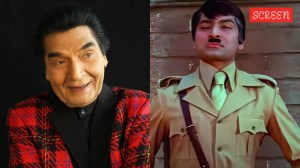‘Amazon of Aligarh’: Google Doodle pays tribute to India’s first woman wrestler Hamida Banu
Hamida Banu's triumphs echoed across newspapers, earning her the moniker ‘Amazon of Aligarh’.
 Hamida Banu was born into a family of wrestlers near Aligarh, Uttar Pradesh, in 1900s.
Hamida Banu was born into a family of wrestlers near Aligarh, Uttar Pradesh, in 1900s.In a nod to women’s resilience and sporting prowess, Google commemorates Hamida Banu, India’s first professional woman wrestler. Banu’s legacy, forged in the 1940s and 50s, continues to inspire generations.
Who is Hamida Banu?
Born into a family of wrestlers near Aligarh, Uttar Pradesh, in 1900s, Banu challenged societal norms from a young age. Despite the prevalent discouragement of women’s participation in athletics, she fearlessly pursued her passion for wrestling. Banu issued open challenges to men, competed with them and even offered her hand in marriage to the first man to defeat her.
Banu’s triumphs echoed across newspapers, earning her the moniker ‘Amazon of Aligarh.’ Her feats, dietary regimen, and rigorous training routine became subjects of widespread admiration and fascination.
Hamida Banu’s legacy transcends the boundaries of sport. She epitomises resilience, determination, and the unwavering pursuit of one’s passions. Her name remains etched in the annals of Indian sporting history, a testament to the enduring spirit of trailblazers.
Google mentions this doodle was drawn by artist Divya Negi from Bangalore. Negi wanted to talk about Hamida Banu Begum, who she finds inspiring, for she stood for what she believed in, even if that meant standing against what everyone else thought was right. It is not a small feat for the time she lived in, especially since she was a woman.
When Google reached out to her via email, inviting her to doodle, Negi couldn’t believe it. She hadn’t drawn anything for a while since she was busy with other work. Negi said learning about Banu and doodling her felt like a passion project and that she admired Banu’s courage and talent, the website stated.
For this picture, Negi wanted to show how amazing Banu was, even though she didn’t get the recognition she deserved then. Negi was inspired by the wrestling training grounds—Akharas—of the colonial era India ‘adorned with traditional Indian motifs and bright colours’, Google mentioned on a page dedicated to the doodle. She also looked at old newspapers and trophies for ideas. Negi wanted this picture to feel like a big celebration of Hamida’s achievements.
Negi thought Hamida’s story was ‘heartbreaking’, but would strike a chord with today’s generation. Negi also said she felt honoured to draw this as a tribute to Banu.





- 01
- 02
- 03
- 04
- 05


























